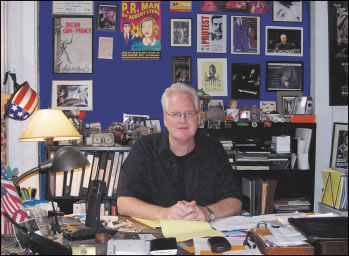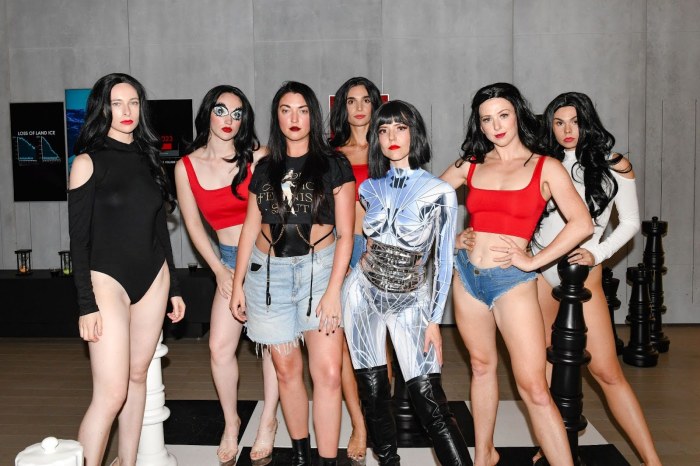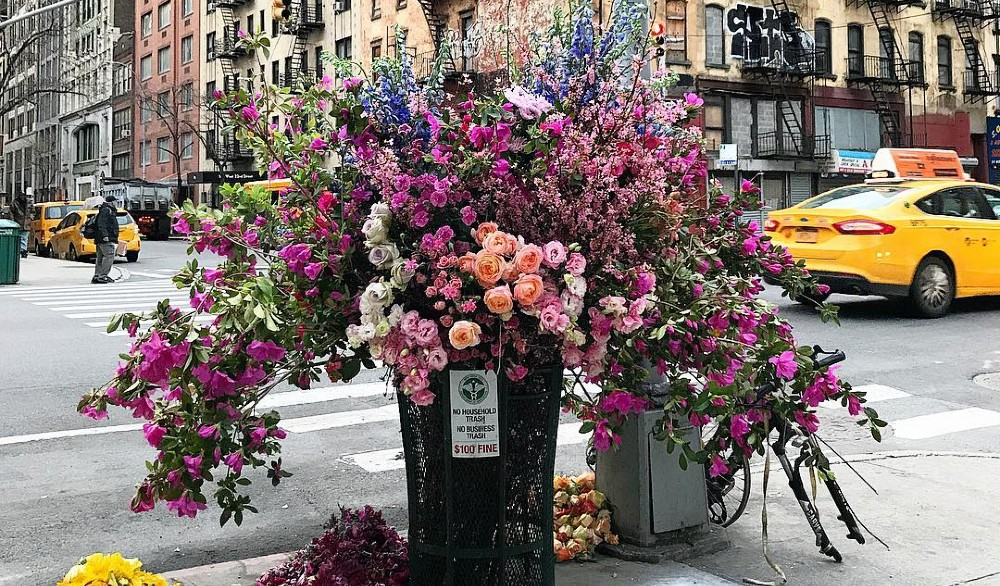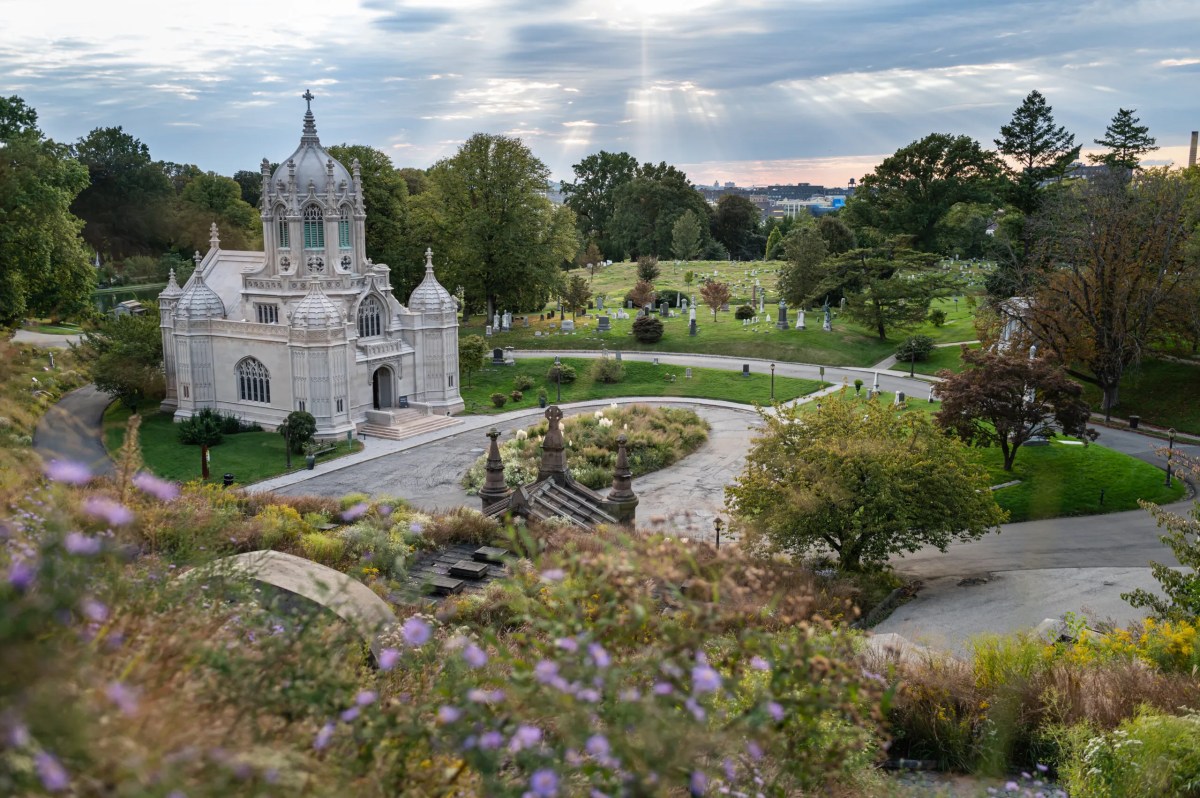Vital Soho institution booted to make way for needless boutique
BY TRAV S.D.
By now it seems as inevitable as scientific law: Pioneering arts institutions, as they grow, sow the seeds of their own destruction by improving their iffy neighborhoods and making them attractive to retailers willing to pay much higher rents. In effect, the arts groups are priced out of the very neighborhoods they help transform.
Ironically, the latest Off-Off Broadway theatre to fall victim to this depressingly familiar phenomenon is one of the oldest (and thus, one would think, one of the most well-established). On August 31st, the Ohio Theatre (66 Wooster St.) will close its doors for the last time — following 26 years of operation and hundreds of innovative productions.
The Ohio Theatre was founded in 1984 by William Hahn and Charles Magistro, two arts patrons who fell in love with this converted factory space’s hardwood floors, enormous ceilings and double row of weight-bearing pillars that would prove both a challenge and an inspiration to hundreds of downtown stage directors.
Since 1981, it had been the home of the Open Space Theatre Experiment. Close to both The Kitchen and the Performing Garage (home of the Wooster Group). Because of its enormous playing area (one with a lot of character), the space quickly attracted such soon-to-be-major theatre artists as Tony Kushner (“La Fin de la Baleine: An Opera for the Apocalypse”), Anne Bogart (“No Plays No Poetry”) and Maria Irene Fornes (“Fefu and Her Friends”).
Susan Mosakowski produced work there in the early 1980s with her group Creation Production Company.
“At that time people were just discovering the world of downtown performance spaces in Soho and were amazed at these alternative venues for producing theatre,” she says. “What was so great about The Ohio is that it released us from the confines of the black box — it allowed us to dream, to create wonderful environments for our plays.”
In 1988, Detroit native Robert Lyons was hired to manage the space.
“Initially, I had no interest in theater,” says Lyons. “I was an English major. I discovered theatre when I was living in Rockport, Massachusetts and went to see a blues band at a bar in Gloucester. I got there early and some people were putting on an Israel Horowitz play. I started talking to them and thought they were pretty cool. Soon after that I took a short story I was working on and converted it, and that was my first play.”
After “bumming around the east coast” for a number of years, Lyons moved to New York.
“I had been here 6 months when I stumbled onto the Ohio,” he says. “They needed a production manager and by then I’d had some theatre experience. I was hired on for that. I met the owners and made a deal to run the theatre for a year to see how it went. That was 22 years ago.”
In 1995, he formed Soho Think Tank — the company which has subsequently managed the Ohio and presented scores of original works, some by guest companies, some by playwright/ director Lyons himself. One of the first companies-in-residence was the adobe theatre company [sic], which was at the Ohio from 1996 through 2003. During that time, they launched such downtown hits as “Duet! A Romantic Fable” and “Notions in Motion”
“The Ohio was an incredibly exciting space to perform in,” says Jeremy Dobrish, adobe’s artistic director (adobe’s last production was in 2004). “It was one of the most flexible spaces imaginable. At adobe we found ourselves not just writing for specific actors, but writing for the space itself.”
Former adobe company member Arthur Aulisi concurs: “I don’t know of another space in town that has plays written ‘for it’ as much as the Ohio. Adobe certainly created work with the Ohio in mind.”
In addition to its various companies in residence, the Ohio has also been home to Soho Think Tank’s regular series, such as the annual Ice Factory festival (now in its 17th year), and its Sixth Floor Reading series (now in its sixth). The Sixth Floor series highlights another luxurious feature of the Ohio — its large sixth floor rehearsal studio, where the readings took place.
Says playwright and director John Clancy (one of the founders of the New York International Fringe Festival and the League of Independent Theatres), “The sixth floor rehearsal space was my favorite place to work on a show in the city. Sitting in that big room in Soho, with the sun coming through the windows, throwing things back and forth with a bunch of artists, those are some of the happiest times I’ve had in New York.”
The names of artists and companies who’ve passed through the Ohio during the past couple of decades reads like a telephone book of indie theatre: Clubbed Thumb (which produces the Summerworks Festival), Ma-Yi Theatre Company, Target Margin, Elevator Repair Service, New Georges, Andhow!, Reverie Productions, Untitled Theatre Company #64, Clay McLeod Chapman, Sponsored by Nobody, and scores more.
Then, after all that history, in December 2008 (the height of the recession), Hahn and Magistro were forced to sell the building.
“There were financial pressures from the city,” explains Lyons, “Their taxes increased and there was a city-mandated inspection of the building’s façade. When the city mandated a million-dollar renovation, it was the straw that broke the camel’s back. So they sold the building.”
The Ohio’s arrangement with landlords Hahn and Magistro had been informal. The owners had made the space available at sub-market rates in essence to subsidize the creation of art. But there was no lease. And the new owners, a concern called Zar Properties, while not exactly melodrama villains, couldn’t be described as philanthropists either.
“We’ve been working with the new owners and have managed to stay here an additional year and a half, during which time we lost our storage and rehearsal spaces, and our rent doubled,” says Lyons, “We took a big hit to make it through last a year. Then we got an official notice a couple of months ago that they planned to turn it into a high-end retail boutique.”
The Ohio’s last summer season will consist of Clubbed Thumb’s Summerworks (currently playing through DATE) and the Ice Factory Festival. The very last show in the space will be a play written and directed by Lyons himself, entitled “Nostradamus Predicts the Death of Soho.”
“It’s not about a SoHo theatre closing but it does have thematic connections,” says Lyons with a sly laugh.
On August 14th, the theatre will have its final bash — the “Last Chance Dance” party on the closing night of Lyons’ play. And that will close the book on the Ohio.
But not, thankfully on Soho Think Tank.
“Our short term plan is for something we’re calling ‘Ohio Interrupted,’ ” says Lyons. “It’s the umbrella title for our continuing programming in other venues. We’ll make sure the Ice Factory continues. It’s an important festival in terms of the downtown summer landscape. We’ll continue with our presenting arm. We plan to produce a show next year, but it will be scaled back. In terms of space, we’ve been talking with some of our core companies about forming some kind of coalition, and we’d look for space together. It’s likely to be a two to three year project. It’s a hard time to do it. The financial environment is horrific. There’s no city money, no state money, no foundation money. But Soho Think Tank will continue to produce. Beyond that, I don’t know.”
But, according to Clancy, if anyone can pull such a thing off, it’s Lyons.
“Robert is unquestionably one of the best curators in the city. If something is playing at the Ohio you already know that it’s something worth seeing. Even if you’ve never heard of the company, you know it’s going to be worth your time. He’s also incredibly supportive of the artists he program. He’s beautifully old school in the way he actually has class and a sense of grace and dignity that you don’t see that much anymore.”
And, says, Dobrish: “I think that Robert is definitely one of the unsung heroes of Off-Off-Broadway. Without him some of the best theatre of the past 20 years never would have happened.”
“This is an interesting time for me personally,” says Lyons, “My entire New York experience has been at the Ohio. I’m trying to see what it’s like. What will I do if I don’t have a theatre? If I’m not putting all of my energy into keeping institution going what will I do? There’s something very liberating about it and kind of exciting. In a year I may feel differently, but right now, at the moment, I’m kind of looking forward to it.”


















